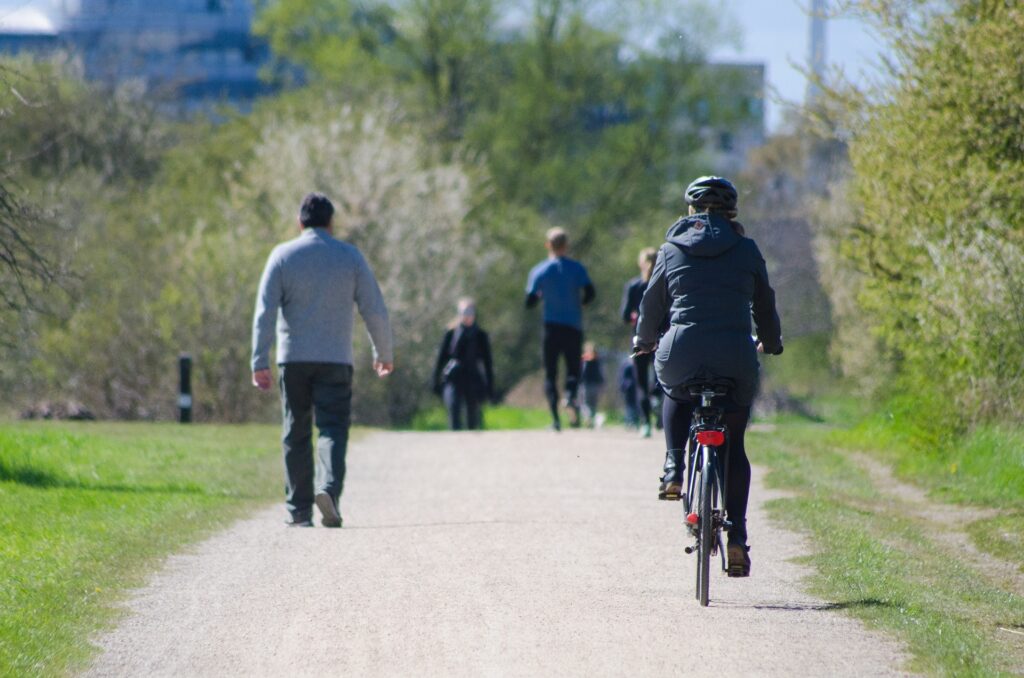“It’s about consistency and progression, not just miles….”
- Walking is a favorite form of cardio for many
- Convenient and approachable, it requires little to no equipment
- Just 30 minutes of brisk walking burns about 150 additional calories a day
- Walking can be an approachable way for many to lose weight
But how many miles would you walk daily to start losing weight?
Amanda Brooks, certified running coach and personal trainer, shares valuable insights on how to improve your walking game and shed extra pounds.
According to Brooks, walking is an incredible and accessible form of exercise. However, the number of miles one needs to walk to lose weight can vary based on individual factors such as weight, slope, speed, and walking time.
To get the best results from your walking routine, it’s important to understand how these factors affect your weight loss journey. By following Brooks’ tips and tricks, you can optimize your walking routine and achieve your fitness goals.
Learn more about how to optimize your walking routine below.
What’s the Daily Mileage Required for Effective Weight Loss Through Walking?
While running can effectively increase calorie burn, it is not mandatory for weight loss. If running doesn’t feel comfortable for you and you find it hard to stay consistent with it, increasing your walking time and distance is a better option.
To lose weight by walking, Brooks suggests that consistency is key and everyone’s mileage will vary. Progressing pace and distance over time and incorporating inclines or hills and trekking poles can help increase total calorie burn.
For women over 40 who want to increase their daily walking gradually, Brooks recommends starting slowly to prevent muscle aches or fatigue that could hinder consistency. She stresses the importance of consistent effort over the long term rather than a one-day workout. She also suggests walking with friends can make the experience more enjoyable and even skip lunch together!
She states, “Start out slowly so that you don’t create muscle aches or fatigue that keep you from showing up the next day. It’s not about one day of workouts, it’s about doing it for many months and years. Remember that walking with a friend can be a great way to get together, have more fun with your walk, and skip lunch!”
Fuel Your Weight Loss With Proper Nutrition
According to Brooks, if you’re looking to lose weight, paying attention to your diet is also important. She emphasizes that a balanced diet is crucial to any weight loss program. It provides the necessary nutrients to energize you and support muscle repair and growth.
To achieve this, it’s recommended to consume nutritious, low-carb meals that are high in protein. To promote muscle growth and calorie burn, consider incorporating these protein-rich foods into your diet after each walk.
Ready to shed some pounds by walking?
Remember that the success of your weight loss journey largely depends on three crucial factors: the duration of your walks, the intensity at which you walk, and the quality of your diet.
Combining physical activity with calorie reduction is recommended for optimal results. As for the ideal daily mileage for weight loss, Brooks suggests this varies from person to person. However, fitness trackers, pedometers, and a 2016 study suggest a good starting point is 10,000 steps or 5 miles per day for maximum weight loss benefits.
So, lace up those sneakers and step up your game! Incorporate longer, more intense walks into your routine, and fuel your body with nutritious, low-carb meals. With this winning combination, you’ll be well on your way to reaching your weight loss goals in a sustainable way.
Balance is Key!
While exercise is crucial for weight loss, it’s important to avoid overdoing it, as this can lead to aches, pains, and burnout. Yes, even with low-impact workouts like walking.
To stay safe, incorporate light stretches at the beginning and end of each walk to prevent cramping and injuries.
If you’re new to exercise, ease into it with short walks or a light pace, gradually increasing your endurance over time.
And remember, to maintain your weight loss success, make walking a consistent part of your routine, and consider transitioning to running for an added challenge.

